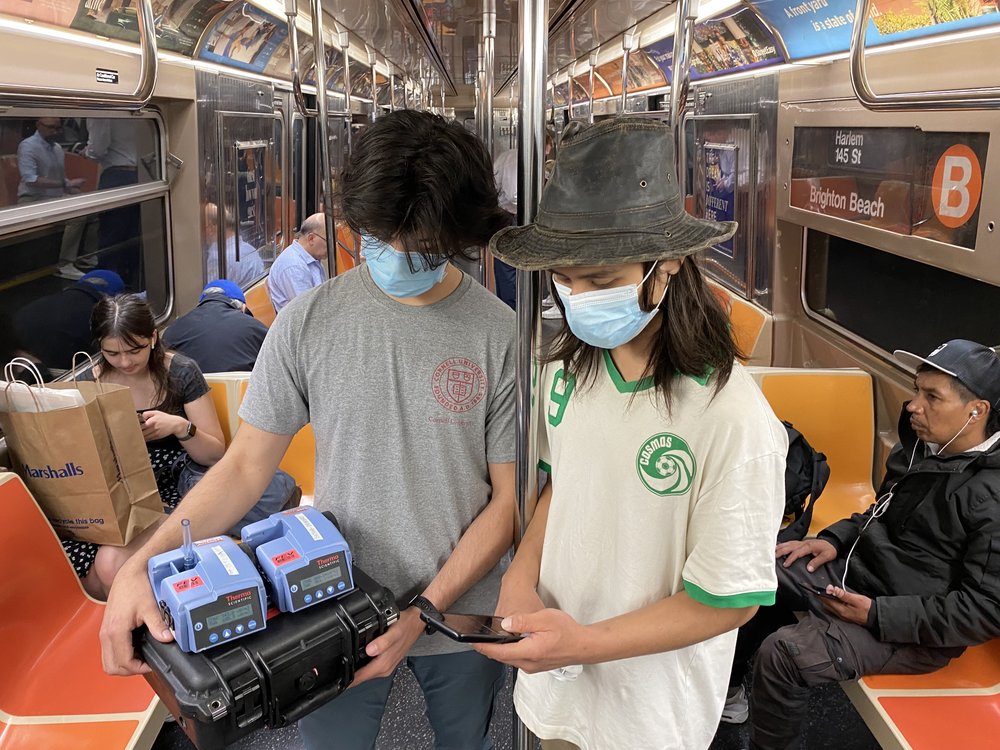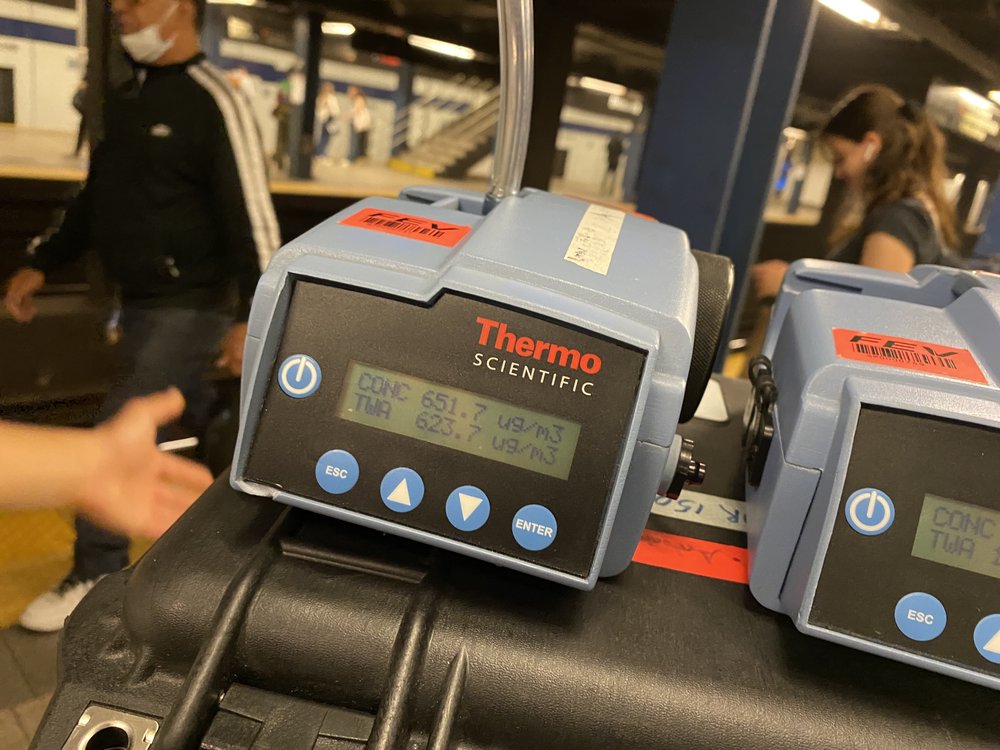Think NYC air quality is bad on the street? Try the subway station.
June 8, 2023, 5 a.m.
The team, which previously studied air quality in the subway system, found that particulate matter increased when going down into the Broadway-Lafayette station in Lower Manhattan.

The New York City subway system is no safe haven from the dreadful air quality due to wildfires.
In fact, a spot-check in lower Manhattan found the air was even worse on Wednesday afternoon below ground than on the street.
Gothamist tagged along with a team of researchers at NYU who study air quality in the subways. Doctoral students Antonio Saporito and David Luglio toted two $1,000 air quality monitors into the Broadway-Lafayette station, measuring the amount of particulate matter – known as PM2.5 – in the air.
- heading
- How to safe stay in unhealthy air
- image
- image
- None
- caption
- body
Smoke from the Quebec and Ontario fires is blanketing the East Coast, bringing fine particulate matter that can lodge itself deep in the lungs. Public health experts say some basic precautionary measures can limit your exposure.
- Wear a mask: Public health experts say wearing any well-fitting mask is beneficial, but N95s and KN95s will offer the most protection against fine particulate matter entering the lungs.
- Stay indoors: The best way to avoid smoke exposure is to stay indoors and keep the windows closed. In this case, air conditioning and air purifiers are our friends.
- Avoid strenuous exercise: If you are outdoors, avoid heavy exercise as this will force you to breathe in extra amounts of the toxins more deeply. Go easy on the jogging, tennis, and even pickleball.
See the latest air quality data for New York City and New Jersey here.
New York City typically has a reading of 12 micrograms of particles per cubic meter volume of air.
On Wednesday, outside the entrance to the Broadway-Lafayette station, one of the devices gave a reading of 612.
Down on the subway platform, where straphangers waited in hazy air, the device ticked up to 660. That’s a 5,400% increase from typical city levels.
“That’s the density of the particles,” Luglio said.
“It’s kind of startling looking at them right now,” Saporito added.
On a B train, the levels of particulate matter dropped to just below 350, which the researchers said was still a surprisingly high amount.
The air particles, which are about 30 times smaller than a human hair, contain traces of chemicals like iron and carbon. They’ve been linked to health problems such as asthma and heart attacks. The researchers' figures are not to be confused with the Air Quality Index, or AQI, which is a metric derived from measurements of particulate matter, as well as other pollutants like ozone.
Notably, as a train pulled into the station and then departed, the numbers dropped. The researchers attributed that to a “piston effect.”
“So when the train comes through, it pushes clean air in, but when it pulls away, it'll drag all the particles and resuspend them,” Saporito said.
Once the train was gone, the numbers on the monitors started to tick up again.

The researchers were already well aware of the high levels of particulate matter in subway stations. The highest level they found was at the Christopher Street station PATH platform, which clocked more than 1,000 PM2.5 one day well before the wildfires in Canada transformed the city into a “Blade Runner”-style urban wasteland.
Just last week, the West Fourth Street station had more than 300. But the researchers didn’t expect the above-ground pollution to dramatically increase the levels below ground as well.
“There's been reports from other studies around the world who've claimed that particles come from outside into the station. We never really believed that,” Luglio said. “These results are showing us that it's very likely to be what's happening.”
Previously, the researchers determined that stations closest to tunnels below the Hudson and East rivers to have high levels of particulate matter. The MTA disputed their methodology when the study was released in January.
Saporito and Luglio cautioned that Wednesday’s survey was not a scientifically rigorous study. But both agreed, it was not safe to be in there without a mask.
“It's a dangerous amount of particles in here, especially for those who have asthma, pre-existing conditions,” Luglio said. “Would not advise taking the subway for prolonged periods of time.”
The MTA said it was keeping an eye on the sky, like every other New Yorker.
“The MTA is closely monitoring reports of atmospheric conditions which are being pushed into the New York metropolitan area, including smoke, and recommends heeding guidance that the city and state are providing to the public,” MTA spokesperson Kayla Shults wrote.
How to protect your lungs as NYC’s air quality suffers from wildfires Data, maps and charts from NYC’s air quality crisis: June 2023